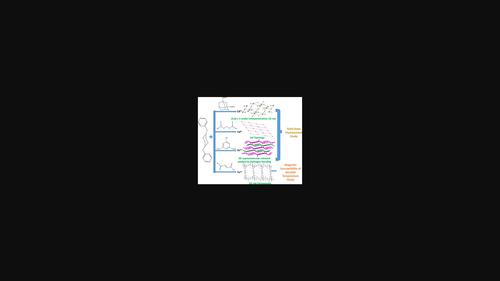当前位置:
X-MOL 学术
›
Acta Cryst. B
›
论文详情
Our official English website, www.x-mol.net, welcomes your
feedback! (Note: you will need to create a separate account there.)
Design and synthesis of diverse Cd2+/Zn2+/Cu2+ coordination polymers tuned by dicarboxylate and auxiliary 1,4-bis(pyridin-4-ylmethyl)piperazine ligands with luminescence and Hirshfeld surface analyses
Acta Crystallographica Section B ( IF 1.3 ) Pub Date : 2023-11-15 , DOI: 10.1107/s2052520623007813
Nanhao Jin 1 , Yuqi Liu 1 , Siyu Dai 1 , Yanghua Li 1 , Xinying Wang 1 , Yue Zhao 1 , Xiaoming Liu 1 , Han Chen 1 , Huilong Luo 2 , Wei Li 1
Acta Crystallographica Section B ( IF 1.3 ) Pub Date : 2023-11-15 , DOI: 10.1107/s2052520623007813
Nanhao Jin 1 , Yuqi Liu 1 , Siyu Dai 1 , Yanghua Li 1 , Xinying Wang 1 , Yue Zhao 1 , Xiaoming Liu 1 , Han Chen 1 , Huilong Luo 2 , Wei Li 1
Affiliation

|
Four new coordination polymers, including 1D, 2D and 3D structures, were synthesized via a hydrothermal method using Cd2+/Zn2+/Cu2+ metal salts as nodes. These polymers were formed through self-assembly of four different dicarboxylic acid ligands, namely adamantane-1,3-dicarboxylic acid (H2adc), glutaric acid (H2glu), 5-hydroxyisophthalic acid (H2hip) and fumaric acid (H2fum), in conjunction with the auxiliary ligand [1,4-bis(pyridin-4-ylmethyl)piperazine (bpmp). The corresponding formulae are [Cd3(adc)2(bpmp)Cl2(H2O)2]n (1), {[Cd2(glu)2(bpmp)2(H2O)2]·8H2O·2CH3OH}n (2), [Zn(hip)(bpmp)(H2O)]n (3) and [Cu(fum)(bpmp)(H2O)2]n (4). Single-crystal X-ray diffraction studies revealed that the Cd2+ centers in complex 1 all adopt a six-coordinate mode but two distinct {CdO2N2Cl2} and {CuO5Cl} units. The 3D network of complex 1 can be simplified to a binodal (4.6)-connected underlying net with the point symbol (3·42·5·62)4(32·62·72·88·10). Each Cd2+ cation in complex 2 adopts a seven-coordinate {CdO5N2} center, forming an asymmetric pentagonal bipyramidal coordination. Its stacking structure is formed by the interaction of hydrogen bonds between 2D supramolecular layers, with the adjacent layers exhibiting mirror symmetry. Each Zn2+ ion in complex 3 displays a {ZnO3N} four-coordinate unit. Its stacking structure is formed by one-dimensional [Zn(hip)(bpmp)(H2O)]n chains connected through hydrogen bonds. On the other hand, complex 4 features a Jahn–Teller distorted {CuO4N2} octahedral coordination. Subsequently, the thermal stability of these complexes was investigated. The solid-state fluorescence spectroscopy was employed to analyze complexes 1, 2 and 3. Additionally, a Hirshfeld surface analysis was performed on complex 3.
中文翻译:

通过发光和赫什菲尔德表面分析,设计和合成由二羧酸盐和辅助 1,4-双(吡啶-4-基甲基)哌嗪配体调节的多种 Cd2+/Zn2+/Cu2+ 配位聚合物
以Cd 2+ /Zn 2+ /Cu 2+金属盐为节点,通过水热法合成了四种新型配位聚合物,包括1D、2D和3D结构。这些聚合物是通过四种不同的二羧酸配体自组装形成的,即金刚烷-1,3-二羧酸(H 2 adc)、戊二酸(H 2 glu)、5-羟基间苯二甲酸(H 2 hip)和富马酸(H 2 fum),与辅助配体[1,4-双(吡啶-4-基甲基)哌嗪(bpmp)结合。相应的式为 [Cd 3 (adc) 2 (bpmp)Cl 2 (H 2 O) 2 ] n ( 1 ), {[Cd 2 (glu) 2 (bpmp) 2 (H 2 O) 2 ]·8H 2 O·2CH 3 OH} n ( 2 )、[Zn(hip)(bpmp)(H 2 O)] n ( 3 )和[Cu(fum)(bpmp)(H 2 O) 2 ] n ( 4 )。单晶X射线衍射研究表明,配合物1中的Cd 2+中心均采用六配位模式,但有两种不同的{CdO 2 N 2 Cl 2 }和{CuO 5 Cl}单元。复数1的 3D 网络可以简化为双节点 (4.6) 连接的底层网络,其点符号为 (3·4 2 ·5·6 2 ) 4 (3 2 ·6 2 ·7 2 ·8 8 ·10) 。 配合物2中的每个Cd 2+阳离子均采用七配位{CdO 5 N 2 }中心,形成不对称五角双锥配位。其堆叠结构是由二维超分子层之间的氢键相互作用形成的,相邻层呈镜面对称。配合物3中的每个Zn 2+离子显示出{ZnO 3 N}四配位单元。其堆叠结构由通过氢键连接的一维[Zn(hip)(bpmp)(H 2 O)] n链形成。另一方面,配合物4具有 Jahn-Teller 扭曲的 {CuO 4 N 2 } 八面体配位。随后,研究了这些配合物的热稳定性。采用固态荧光光谱分析配合物1、2和3 。此外,对配合物3进行了 Hirshfeld 表面分析。
更新日期:2023-11-15
中文翻译:

通过发光和赫什菲尔德表面分析,设计和合成由二羧酸盐和辅助 1,4-双(吡啶-4-基甲基)哌嗪配体调节的多种 Cd2+/Zn2+/Cu2+ 配位聚合物
以Cd 2+ /Zn 2+ /Cu 2+金属盐为节点,通过水热法合成了四种新型配位聚合物,包括1D、2D和3D结构。这些聚合物是通过四种不同的二羧酸配体自组装形成的,即金刚烷-1,3-二羧酸(H 2 adc)、戊二酸(H 2 glu)、5-羟基间苯二甲酸(H 2 hip)和富马酸(H 2 fum),与辅助配体[1,4-双(吡啶-4-基甲基)哌嗪(bpmp)结合。相应的式为 [Cd 3 (adc) 2 (bpmp)Cl 2 (H 2 O) 2 ] n ( 1 ), {[Cd 2 (glu) 2 (bpmp) 2 (H 2 O) 2 ]·8H 2 O·2CH 3 OH} n ( 2 )、[Zn(hip)(bpmp)(H 2 O)] n ( 3 )和[Cu(fum)(bpmp)(H 2 O) 2 ] n ( 4 )。单晶X射线衍射研究表明,配合物1中的Cd 2+中心均采用六配位模式,但有两种不同的{CdO 2 N 2 Cl 2 }和{CuO 5 Cl}单元。复数1的 3D 网络可以简化为双节点 (4.6) 连接的底层网络,其点符号为 (3·4 2 ·5·6 2 ) 4 (3 2 ·6 2 ·7 2 ·8 8 ·10) 。 配合物2中的每个Cd 2+阳离子均采用七配位{CdO 5 N 2 }中心,形成不对称五角双锥配位。其堆叠结构是由二维超分子层之间的氢键相互作用形成的,相邻层呈镜面对称。配合物3中的每个Zn 2+离子显示出{ZnO 3 N}四配位单元。其堆叠结构由通过氢键连接的一维[Zn(hip)(bpmp)(H 2 O)] n链形成。另一方面,配合物4具有 Jahn-Teller 扭曲的 {CuO 4 N 2 } 八面体配位。随后,研究了这些配合物的热稳定性。采用固态荧光光谱分析配合物1、2和3 。此外,对配合物3进行了 Hirshfeld 表面分析。



































 京公网安备 11010802027423号
京公网安备 11010802027423号